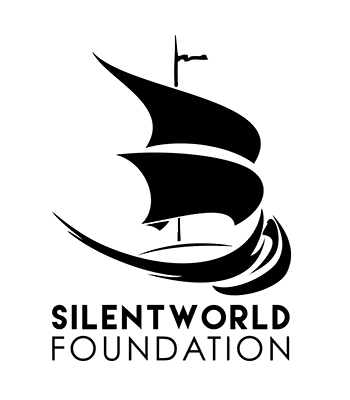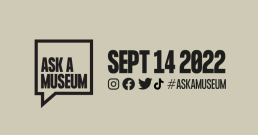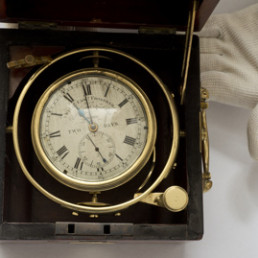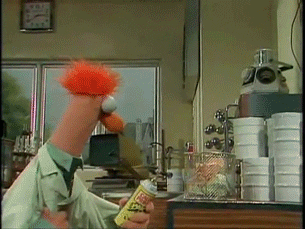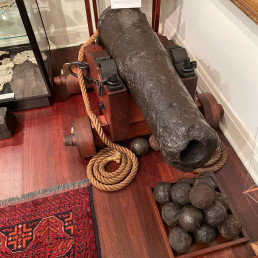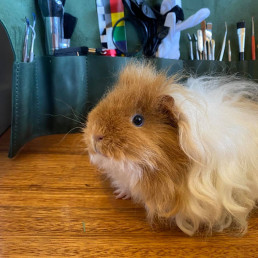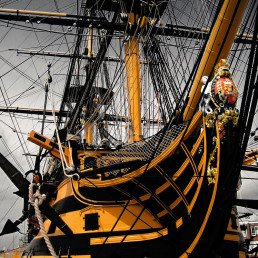Your questions answered!
Museums are curious places, they inspire wonder, encourage questions and always remind you please, do not touch the exhibitions. #AskAMuseum (formally #AskACurator Day) is a yearly event that encourages museums, libraries, galleries, archives, science centres etc, to answer your questions, primarily over social media.
When the team is not off on fieldwork or busy preserving early colonial boats in PEG wax, we tend to the Silentworld Foundation Collection – some 2000 items which explore the maritime history of Australasia and Melanesia. So while we don’t have anyone on staff with “Curator” in their title, we DO have a range of skills and a wealth of experience which you will find in any collecting institution or archaeology department.
Meet the team

Paul Hundley
DIRECTOR & MARITIME ARCHAEOLOGIST

Irini 'Renee' Malliaros
MARITIME ARCHAEOLOGIST & PROGRAMME DIRECTOR
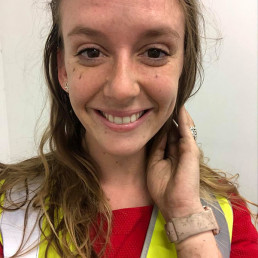
Heather Berry
CONSERVATOR & PhD CANDIDATE
Kate Pentecost
DIGITAL CONTENT PRODUCER

What's your favourite museum smell?
Paul: We have quite a collection of old books related to European voyages of exploration in the 18th and early 19th centuries, and the early history of the Australian colonies. They smell old, and that smell for me evokes a sense of the history that they tell.

What’s your favourite object?
Renee: Difficult to tell as I am still learning about our unique collection and may come across something that will blow my mind even more but to date, my favourite object is Chronometer 2 from HMS Beagle. The very special thing about this chronometer is that it is one of several used onboard during the voyage on which famous naturalist Charles Darwin joined. HMS Beagle set sail from Plymouth just after Christmas on 27 December 1831.
The expedition visited places around the globe and returned to Britain on 6 October 1836. Following this, Darwin, through his notes made during the 5-year voyage, wrote Journal of Researches into the Geology and Natural History of the Various Countries Visited by the H.M.S. Beagle, 1831-1836 and then a five-volume series called Zoology of the Voyage of the Beagle. It is through this work that he began to formulate his theory of evolution by natural selection which he later published in his work, The Origin of Species.
Although it is unlikely that Darwin handled the chronometer personally, it is a true wonder to know that we are connected to his story through this object that has lived on beyond the time of HMS Beagle.

What part of your job has surprised you?
Kate: Weird, unique little skills you pick up: How to open a door when moving an object (hint: use your back first), how to “feel” items with nitrile gloves on, cutting a straight line in archival blue card with a craft knife (it’s an art). How important office skills are: emails, data entry, scanning, how to run a useful meeting. None of these skills are ‘taught’ in Museum Studies, but you pick them up quickly on the job – or internship if you are lucky to have one.

What’s your largest object?
Heather: We have several cannon in the Silentworld Foundation museum – and I love them! Larger objects like that are for the most part, more robust, so when you’re doing a visual or physical examination you can worry less about causing irreparable harm with a small careless movement.
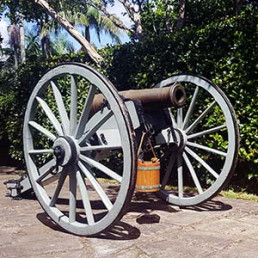

Have you ever broken an object?
Paul: Thankfully NO! But given that we have a conservator on our staff, I don’t feel that it would be a disaster. Heather could hopefully restore the object to a condition where the object was stable and looked like it did before.


What’s in a conservators bag?
Heather: It can sometimes look a bit threatening when I bring out my tool roll – it’s filled with dental tools! I have assorted dental picks, lots of different types of small metal spatulas, and four different kinds of tweezers. I also have a colour card, paintbrushes, and two different types of gloves.

Have you discovered any objects in your collection that are fake?
Paul: Yes, but they really weren’t a discovery! We have a Holey Dollar and Dump in the collection. The two coins were produced on the direction of Gov. Macquarie to address the shortage of coinage in the colony. It was common for forgeries of the smaller dumps to be made because of the value of the coin. We have an example of a forged dump (a fake coin) in our collection.

Which is your favourite room in your museum and why?
Renee: On balance, I’m going with the room we generally refer to as “The Map Room”. The series of maps it contains show the evolution of understanding and surveying of our island home – Australia. It is a summary of voyages of exploration by individuals who were daring, brave, motivated and a little mad. It is a summary of how humans completed the picture of what their home planet looked like on the surface.

Do you have any wisdom for aspiring curators?
Paul: Having been in museums for 40 years and having been in a position to hire young entry-level curators, I can say that the most important thing is to get as much practical and hands-on experience as you can. Do a high school work-study placement if you can. Volunteer in a museum department that you have an interest in. Take up any internship that is available whether it is paid, unpaid or part of your education.
Unfortunately, there are many universities teaching museum studies courses and far more students are graduating with degrees than there will ever be positions to fill. I have had over 125 applicants for two positions on one-year contracts. Applicants included BA’s, MA’s and even 12 Phd’s in Museum Studies. Most of the graduates at any education level had no practical experience at all. The positions were filled by applicants that had volunteer experience in institutions that had given them experience in actually working with a collection management system and writing label text for exhibitions.
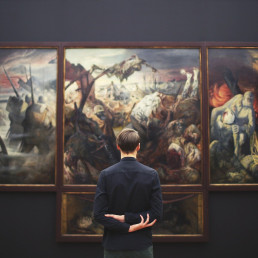

Have you ever broken an object?
Heather: Not yet – though as a conservator, I feel it’s only a matter of time until a treatment goes wrong… but then I have the means to (hopefully) fix it again!
The closest I’ve come was with an old pewter button – perhaps 200 years old – I was doing an internship and was advised by my supervisor to dewater it in acetone after a treatment, and was reminded NOT to put the object down onto plastic, as the acetone would melt the plastic. I listened carefully, made notes, dewatered it in acetone, and carefully placed the button on a plastic tray.
I was terrified seconds later when I looked at it, thinking I’d somehow caused flash corrosion from the lead component – there were white blooms disfiguring the face! I panicked, and called over my supervisor – I had melted the plastic on, just as she had warned.
It was easily removed, I was heartily laughed at by others in the lab, as I deserved, and I learned the lesson.

Zombies attack, which museum object do you use to fight them?
Renee: The Royal Naval Officer’s dress sword by Gieve Matthews & Seagrave, Weymouth. First of all, Weymouth has a special place in my heart and second, if one is to lop off zombie heads, one should do so in style – nothing wrong with a bit of nautical themed bling while the slaying rolls.

Is your museum haunted?
Kate: Not this one…but I’ve had a coworker swear she saw a ghost once at the Australian National Maritime Museum (and no, it wasn’t a security guard checking on the gallery after hours). Also, the library there was said to have visits from a former librarian.

Who is the most famous person to visit your museum?
Paul: David Attenborough came to dinner at our museum several years ago!

What is the most dangerous object in your collection?
Renee: Define dangerous! Dangerous to a human, physically, would be any number of weapons in the collection. If I had to pick the most devastating to both humans and ships, I might go with one of the carronades in the collection. Think large-diameter bore, short-range cannon. A bit like the shotgun equivalent of a cannon.
They were popular on merchant vessels, as they were easier to use with less crew and devastating at short range. They were also used by the navy and worked great at short range broadside engagements. Their use faded towards the 1850s.

What’s on a Curators playlist?
Kate: Lots of podcasts and movie soundtracks! Anything that lets you zone out and concentrate on the job – moving objects, data entry, writing blogs…I recommend Stories of Scotland, Lore, and Uncanny Japan, as well as soundtracks by Bear McCreary (Black Sails fits the maritime theme of our work at Silentworld VERY nicely).

What’s your favourite museum to visit other than your own?
Renee: Not sure if it classifies entirely as a museum as it is a commissioned ship – HMS Victory, of Battle of Trafalgar fame, in dry dock at the Portsmouth Historic Dockyard, UK is one of my favourite places connected to history. Although the fabric of the ship is largely replaced through many repairs over time as needed, it is its essence that lives on and captivates the imagination and the senses.
There is nothing more engaging than experiencing “an exhibit” in more than just the usual way. The smell of the ship, the sound of the creaking timbers and their feel beneath one’s fingers as well as the visual presentation of the space envelops and transports the visitor. I have been on board 3 times in the space of 2 years and would visit again given the chance.

What’s the role of a museum in 2022?
Heather: I think the ultimate role of a public museum in 2022 is to not just showcase diverse stories – but to allow the tellers of those stories access to museums and the reified behind the scenes spaces. It’s not just about having input from the community anymore, but about the community telling their own stories in their own ways.
As a conservator, I’m less involved in deciding what the museum displays, but conservation as a field is increasingly looking to the communities of origin and creators of artefacts to inform treatment decisions – and I think this needs to continue, and increase.

If you could sum up your job with a meme, what would it be?
Kate: For a good giggle, I recommend checking out the hashtag for MusMeme.

Tags
Michael Gooding
As a Captain for Silentworld Charters, Michael has experienced the wonders of Oceania first hand, and has cruised around this special region for nearly 30 years. His role as Captain includes being a part of the not-for-profit Silentworld Foundation. The Silentworld foundations annually undertakes an expedition that highlights the unique history of the South Pacific region and raises awareness for the stories that each expedition discovers. Combining his passion for the sea, exploration and maritime archaeology, Michael has helped create some special experiences for those on board Silentworld, showing how we can use yachts to truly engage with and protect the oceans we sail on.
